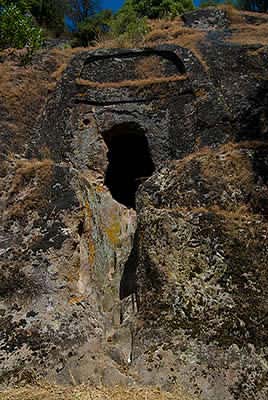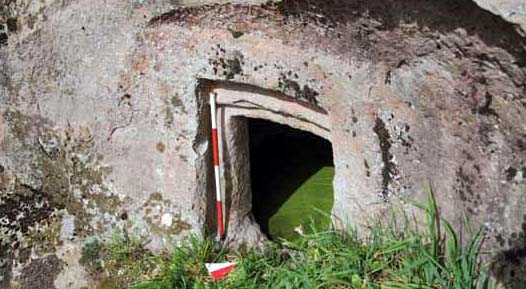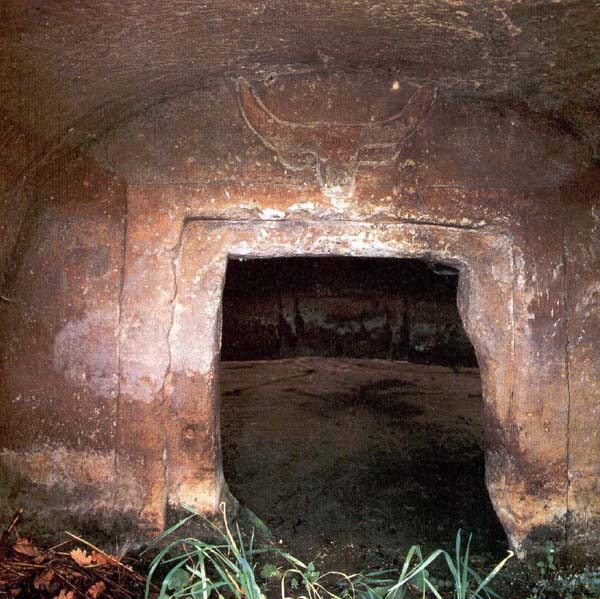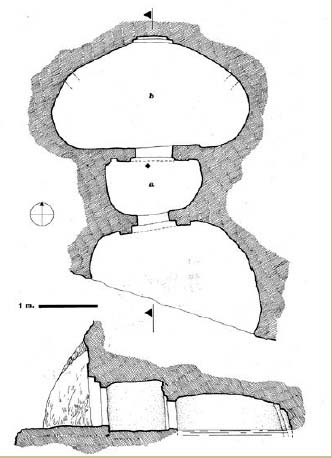One of the most fascinating sites, both for its extremely wild location and for its complexity, is that of "Sos Furrighesos". It is a difficult necropolis to reach, it would be preferable to be accompanied by those who know the area, but it is absolutely worth exploring the area, full of necropolises and Nuragic chapels.
The Sos Furrighesos necropolis consists of 18 domus de janas, located along a rocky ridge similar to a barrier, which rises up to 20 meters in certain points and facing SW, arranged on three superimposed levels reachable thanks to a series of carved notches in the rock.
At the edge of the ridge you can see the remains of a nuraghe and the bases of a village made up of circular huts, not far away you can also find the processing waste from a lithic workshop.
The burials have simple single-cell, two-cell and T-shaped plans, closed by wooden or rock doors and surrounded by a dense network of channels which prevented rainwater from penetrating inside, preserving the funerary objects.
Some tombs are painted in colors ranging from bright red to blood red, colors obtained by mixing ocher and organic substances, to symbolize, in a burial place, the strong drive towards regeneration and a return to life.
The anteroom of the domus was used for cults, the numerous cups in which the offerings were placed are visible, often this was the only painted room.
In three hypogea there are carved representations of horns or protomes, also symbols of regeneration.
Tomb IX stands out not only for its size, but also for an arched stele similar to that of the tombs of the giants, above which there is a housing in which three bethyl pillars have been placed which have a magical-protective function. This stele was sculpted during the Ancient Bronze Age, therefore in a later period, by sacrificing the antechamber of the domus.
There are over 140 petroglyphs found in the various domus which represent concentric arcs, zig-zag figures, lattices, stars, as well as anthropomorphic images, comb-like images and animal figures, the latter brutally disfigured in an attempt to steal them. To underline the petroglyphs depicting the upside down three cusps and in the shape of a candelabrum. The large number of petroglyphs found places the Sos Furrighesos necropolis among the most interesting sites to visit.






Historical notes
The study of the necropolis of Sos Furrighesos was published for the first time by Giuseppa Tanda in 1984, then deepened by the same scholar on several occasions. The Tomb has never been subjected to archaeological excavation, therefore, at present it is not possible to better specify the chronological framework, referring generically to the neo-Eneolithic context.
CARD
LATEST PUBLISHED TEXTS
VISIT THE FACTSHEETS BY OBJECT

